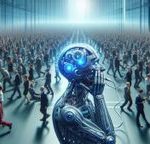Economists polled by Reuters had forecast an increase of 225,000 jobs. The economy needs to create between 70,000 and 100,000 jobs a month to keep up with the growth of the active population. The unemployment rate fell to 3.6% from 3.7% in May.
Although job growth is slowing, the labor market remains strong despite the fact that the Federal Reserve (Fed) has raised rates by 500 basis points since March 2022, when it embarked on its campaign to tighten monetary policy. fastest in over 40 years. For now, it’s helping the economy defy economists’ recession predictions.
Average hourly earnings grew 0.4% last month, after rising by the same percentage in May. In the 12 months through June, wages rose 4.4%, matching May’s advance.
Annual wage growth remains too high to be consistent with the Fed’s 2% inflation target. The US central bank will almost certainly resume rate hikes this month, pushing rates into a 2.25-2.5% range. , as its president, Jerome Powell, pointed out after a hiatus in June.
Futures linked to the Federal Reserve’s key interest rate rose on the release of the report, pushing up implied yields and reflecting the loss of confidence in a higher than quarter point hike expected at the US central bank meeting in late December. July.
Traders now see a one in three chance of a further rate hike in November, compared with the almost 50% chance before the report.
While higher-paying industries like tech and finance are purging workers, sectors like entertainment and hospitality, as well as local public education, continue to rebound after losing employees and experiencing accelerated retirements during the Covid-19 pandemic.
Businesses are also hoarding workers, a legacy of the severe labor shortages experienced as the economy recovered from the pandemic recession in 2021 and early 2022.
But some economists argue that the hoarding of workers is masking weakness in the economy, pointing to worker productivity, which plummeted in the first quarter. They also noted that while Gross Domestic Product, the traditional measure of economic growth, was strong in the January-March quarter, an alternative indicator, Gross Domestic Income, has contracted for two consecutive quarters.
While for now companies are content to keep piling on workers, this could change when slowing consumption starts to dent profits, according to economists, who expect major layoffs.
There is also concern that the slowdown in wage growth, driven by the loss of high-paying jobs in the technology and financial sectors, among others, portends lower consumer spending, the main anchor of the economy.












